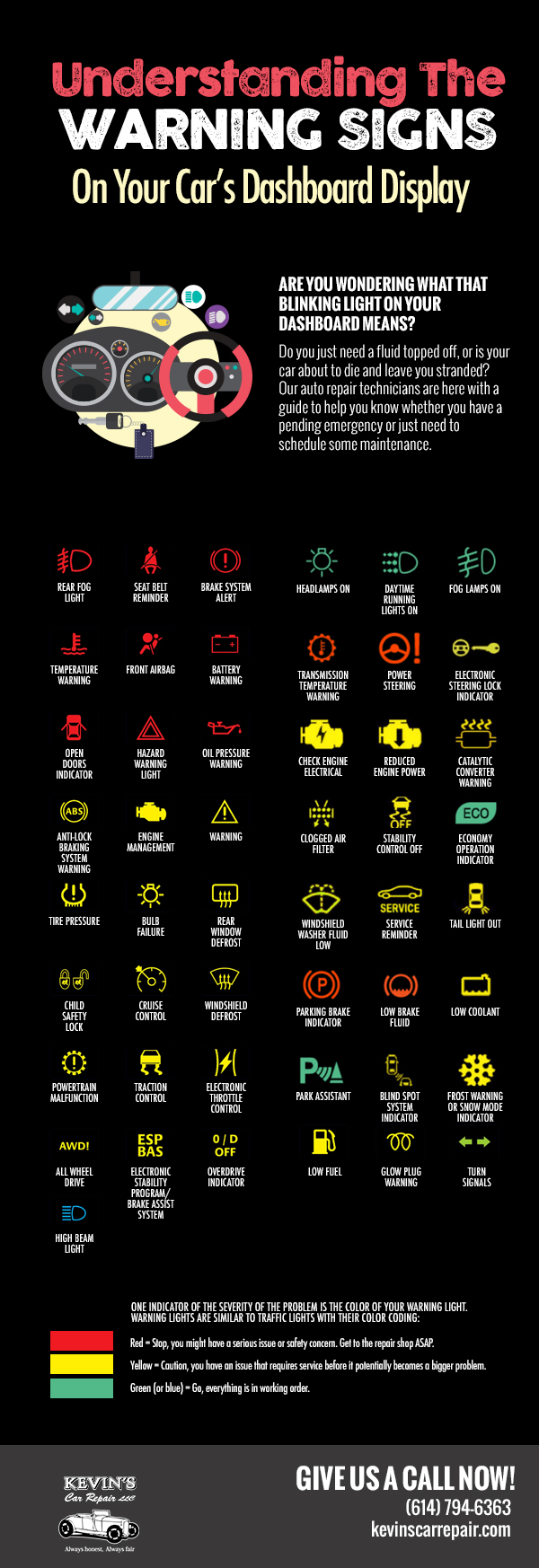Comprehending Your Auto'S Warning Lighting: What Do They Actually Mean?
Comprehending Your Auto'S Warning Lighting: What Do They Actually Mean?
Blog Article
Web Content Author-Faulkner Shepherd
When you're behind the wheel, those radiant caution lights on your dashboard can be a little bit complicated. Do you understand what they're attempting to tell you concerning your vehicle's wellness? Comprehending the significance of these lights is crucial for your security and the longevity of your vehicle. So, the next time one of those lights turns up, wouldn't you intend to analyze its message properly and take the essential steps to address it?
Common Caution Lighting and Interpretations
Identify common caution lights in your vehicle and recognize their meanings to make certain secure driving.
One of the most regular caution lights include the check engine light, which signifies issues with the engine or emissions system. If this light begins, it's critical to have your vehicle inspected without delay.
The oil stress alerting light suggests low oil pressure, calling for immediate attention to stop engine damages.
A blinking battery light may suggest a defective charging system, possibly leaving you stranded otherwise dealt with.
The tire pressure monitoring system (TPMS) light signals you to low tire pressure, influencing vehicle stability and fuel efficiency. Ignoring this can lead to dangerous driving conditions.
The abdominal muscle light shows a trouble with the anti-lock braking system, endangering your ability to quit rapidly in emergency situations.
Finally, the coolant temperature level advising light warns of engine getting too hot, which can result in extreme damage otherwise settled promptly.
Understanding these common warning lights will certainly aid you address issues promptly and maintain safe driving problems.
Importance of Prompt Interest
Recognizing the typical caution lights in your cars and truck is only the initial step; the relevance of quickly attending to these warnings can't be highlighted sufficient to ensure your security on the road.
When a caution light brightens on your control panel, it's your car's way of interacting a possible problem that requires attention. Disregarding these warnings can result in extra extreme issues down the road, jeopardizing your safety and security and potentially costing you much more in repairs.
Trigger focus to advising lights can protect against failures and crashes. For https://alexiskeztn.blog-mall.com/32678882/extremely-convenient-mobile-auto-detailing-solutions-not-just-conserve-you-time-and-money-but-additionally-enhance-your-lorry-s-long-life-uncover-exactly-how-they-can-change-your-routine , a flashing check engine light might indicate a misfire that, if left neglected, can create damage to the catalytic converter. Addressing this immediately can conserve you from a costly fixing.
Likewise, a brake system alerting light might indicate low brake liquid or used brake pads, vital elements for your security when driving.
Do It Yourself Troubleshooting Tips
If you discover a warning light on your dashboard, there are a few do it yourself fixing pointers you can attempt prior to seeking professional help.
The very first step is to consult your automobile's guidebook to comprehend what the specific caution light shows. Sometimes https://www.regulatoryoversight.com/2022/02/president-biden-doubles-down-his-support-for-right-to-repair-movement/ can be as simple as a loose gas cap setting off the check engine light. Tightening up the gas cap may settle the problem.
One more common problem is a low battery, which can trigger different cautioning lights. Inspecting the battery links for corrosion and guaranteeing they're safe and secure may deal with the trouble.
If a warning light lingers, you can attempt resetting it by detaching the vehicle's battery for a couple of mins and afterwards reconnecting it. In addition, examining your automobile's fluid degrees, such as oil, coolant, and brake liquid, can aid troubleshoot advising lights connected to these systems.
Conclusion
Finally, understanding your cars and truck's caution lights is vital for keeping your automobile running smoothly and safely. By promptly attending to these informs and knowing what they imply, you can stay clear of costly repair services and potential breakdowns.
Remember to consult your automobile's manual for particular information on each alerting light and do something about it accordingly to ensure a trouble-free driving experience.
Keep educated, remain safe when driving!
